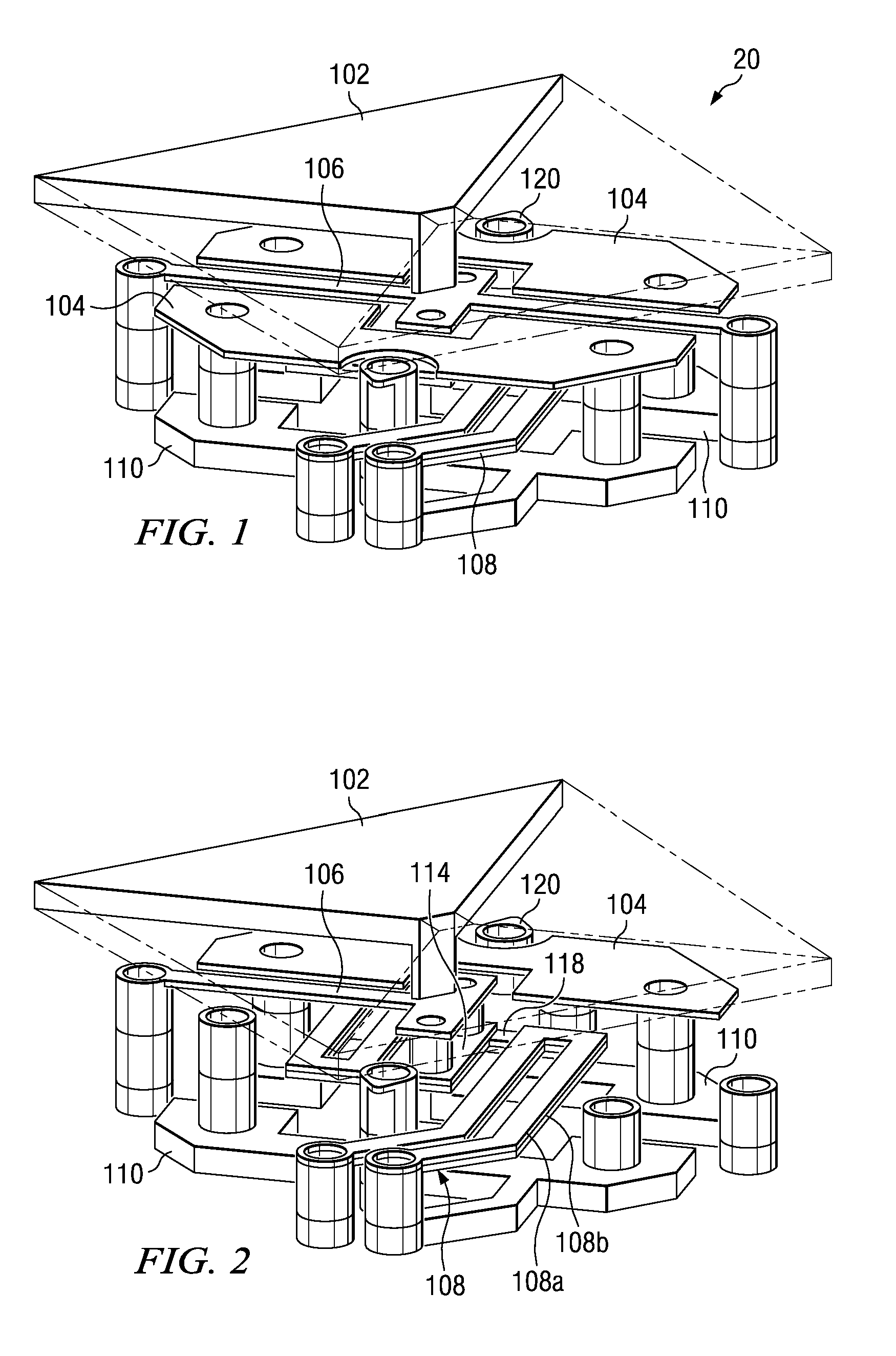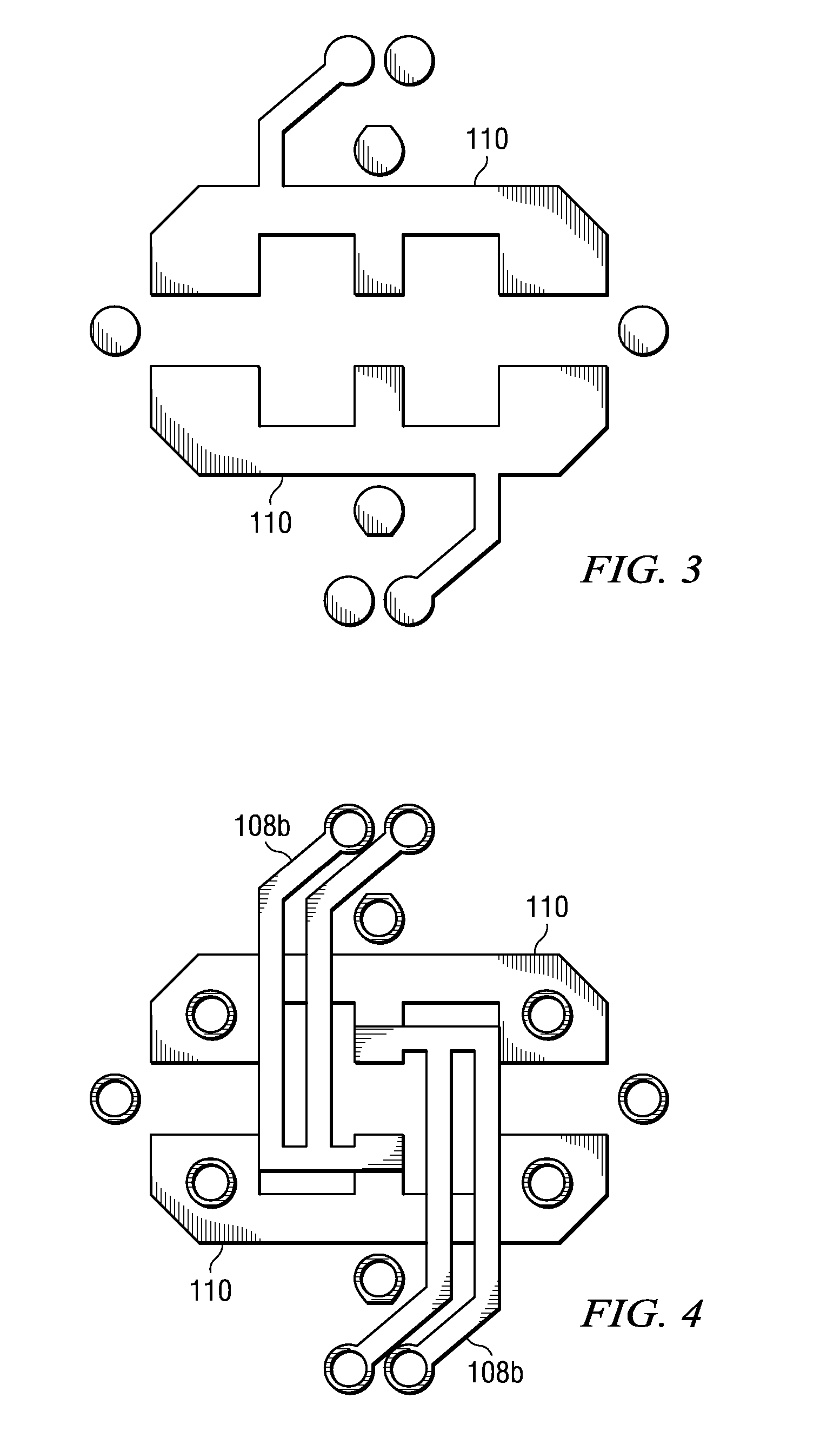Micromirror system with electrothermal actuator mechanism
a micromirror and actuator technology, applied in the field of digital micromirror technology, can solve the problems of dmd image quality affecting, image degradation, size and cost of dmds, etc., and achieve the effect of effective orienting the micromirror, less expensive, and better contrast and image quality
- Summary
- Abstract
- Description
- Claims
- Application Information
AI Technical Summary
Benefits of technology
Problems solved by technology
Method used
Image
Examples
Embodiment Construction
[0022] As shown in FIG. 1, one embodiment of DMD pixel device 20 couples electrothermal actuator elements with electrostatic actuator elements, in order to jointly orient a bistable micromirror 102 (which is shown with a cutaway of ¾ of the micromirror 102 with the remainder of the micromirror 102 illustrated by ghosted line features). The disclosed electrostatic actuator uses electrodes on either side of the micromirror pivot to attract the micromirror 102, pulling it downward into contact with a stop rest 120. This electrostatic orientation of the micromirror 102 is accomplished by applying a constant voltage to the micromirror 102, and selectively applying a voltage to the electrodes. The voltage difference results in electrostatic attraction, orienting the micromirror 102 into either an open or closed position.
[0023] While this electrostatic attraction is one element of the described device 20, electrothermal actuators are further provided to assist in orienting the micromirror...
PUM
 Login to View More
Login to View More Abstract
Description
Claims
Application Information
 Login to View More
Login to View More - R&D
- Intellectual Property
- Life Sciences
- Materials
- Tech Scout
- Unparalleled Data Quality
- Higher Quality Content
- 60% Fewer Hallucinations
Browse by: Latest US Patents, China's latest patents, Technical Efficacy Thesaurus, Application Domain, Technology Topic, Popular Technical Reports.
© 2025 PatSnap. All rights reserved.Legal|Privacy policy|Modern Slavery Act Transparency Statement|Sitemap|About US| Contact US: help@patsnap.com



